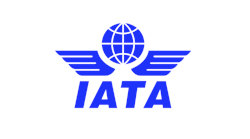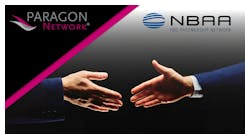Think of the many barriers to communication in our industry: Physiological — business aviation is full of loud environments like the ramp, echoing hangars and static-filled headsets where it is hard to hear and be heard. Cultural — with clients and vendors from around the globe, language differences can be a challenge. But far less obvious, and way more dangerous, are the assumptions we all make daily. It’s how maintenance that’s scheduled to be completed by the fifteenth of the month, can end up disappointing the owner who plans a flight for that same day. It’s also how an executive request for a flight to Las Vegas can end up in NV instead of NM as intended (KLAS vs. KLVS). While it would be great if clients, subordinates, leaders and even loved ones could read our minds, unfortunately most cannot. Consider the simple, common exchange below:
John (manager): “SEI JET needs XYZ. Will you take care of this, please?”
George (subordinate): “Sure. I’ve got it.”
There is the illusion that effective communication has taken place.
However, John’s immediate assumption is that XYZ will be done exactly as he wants it to be done, most likely, as he would do it himself. In reality, George will do it based on his own assumptions, which come from such places as how he was trained, how he’s done or seen it done in the past, how his generation handles things (hastily or methodically, in-person or electronically, etc.), the way that is most in line with his personality — delegation versus doing it himself, personal values, etc.
Some of these can be great. Has George completed the company’s rigorous training program on performing XYZ service? Or is he being mentored by Kim who’s the company XYZ rock star? But some of these can yield disappointing, or even disastrous results; was his past training from his last job — an operation which just got fined by the FAA for infractions? Or, is this an immediate need that he puts off until tomorrow because he is already working on several other things? And, to further complicate things, John’s and George’s understanding of what the heck XYZ actually is may be completely different.
Since we all make unique assumptions based on our own experiences, values, needs, etc., it becomes important to share our assumptions when we communicate. This does NOT mean micromanaging. In an environment where employees are skilled, motivated and engaged, John should not have to tell George the 10 things that XYZ entails. And as a competent employee, George will not appreciate it if he does. However, he does need to convey any critical and/or nonstandard assumptions he is making. When does XYZ need to be accomplished? Is the way SEI JET needs it different in any way from what John knows George’s experience with their service to be?
And what about George’s response? It turns out that he, too, benefits from revealing his assumptions. In his book, "Turn the Ship Around, How to Create Leadership at Every Level" (2012 Greenleaf Book Group Press), (retired) U.S. Navy Captain L. David Marquet introduces a method of communication he calls, “I intend” — the act of stating out loud your next intended action(s). This method balances self-inspiration and ownership with the accountability of input from others. Using this simple, straight forward principle, George can state his assumptions as what he intends to do to accomplish XYZ for SEI Jet.
After John listens, either or both of them can then check for understanding and alignment:
John (manager): “SEI JET needs XYZ by 5pm today. Since they are new with us, I’d like you to do this personally. Will you take care of this, please?”
George (subordinate): “Sure. I’ve got it. Since they ARE new, I intend to personally meet with them today, both to provide XYZ and to make sure they understand and are comfortable with our process and timeline. Does that sound good?”
John (manager): “That sounds great! Thanks!”
By including them in the request, John effectively communicates both his time critical assumption that the work be done by 5pm today and his non-standard assumption that the service be done differently in consideration of this being a new client. Using Marquet’s “I intend,” George effectively communicates his assumptions by stating how he intends to execute John’s assignment. With George’s check to see if his plan “sounds good,” he assures understanding and alignment with John’s assumptions. And we can see by John’s response that they are indeed aligned.
So let’s move past the illusion and ensure that effective communication takes place.Lisa Archambeau is the vice president, facilitator and strategist for ServiceElements, a company that helps organizations in the business aviation industry elevate the power of excellent service to increase their value proposition. She has been in bizav training for 30-plus years and is a Certified Flight Instructor.





